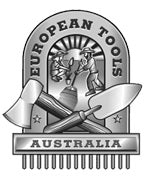Beaver Splitting Axe 3000g Hickory Handle
Description
- Hand forged
- 3 kg head
- 9 cm face
- Hickory handle
- Lifetime warranty
- Important - this axe is not designed for pounding a steel splitting wedge. You need a forged splitting maul for pounding.
--
The Müller story since 1675
The Müller forge was first mentioned documentarily in 1675. Our forebear Peter Müller works in the forge “Am Paalbach”. Where the River Paalbach flows into the frothy River Mur you will find a small sooty forge on the bushy banks. The little village is Steindorf in the district of Murau in Styria. The smith is Peter Müller. He is the tool smith, living in a time of wars, epidemics, earthquakes and the plague. And the business runs well. Clients are the farmers of the surrounding environment and travelling salesmen. The smithy lies directly on the royal post and commercial road, which runs along the River Mur in the Mur valley. It is the connecting road over the Tauern mountains to Salzburg and further north to the German trading centres. This region is connected to the wide world …
High quality Hand Tools
In the year 1785 Martin Müller processes the meanwhile world famous cast steel of Paal into high quality hand tools. In 1823 Georg Müller relocates his forge to Turrach, due to the much better conditions. The industrialization reaches Austria. The first advances in mechanization set in in the factories. Machines begin to repress the workers … But the invention of the steam engine leads the railway to its triumphal procession, which raises the demand for steel enormously. The “Eisenwurzen” region reaches its peak and Turrach becomes the central point of iron and steel production in middle Europe. Martin Müller and his son Georg are attracted and in 1823 they relocate the Müller forge to this area. An atmosphere of change dominates and a new forge is set up. The father hands the forge over to his son Georg. The business profits by the boom of the iron trade.
Niche production
In the year 1884 Bartholomäus Müller finds his way to a niche in Himmelberg. The rise is followed by a fall. The steam engine makes the production independent of flowing water. New industrial centres develop in the east (Bohemia and Moravia) due to the stone coal deposits. It comes to a radical turnover in the whole iron industry of the region. War and a world economical crisis alternate. The region becomes a margin area and the tail lamp of the monarchy. Bartholomäus Müller (Georg’s son) finds his way to a niche. He acquires a blacksmith’s shop in the neighbouring town of Himmelberg. The river Tiebel doesn’t freeze over in winter but flows out of the mountain at a water temperature of 6 °C. This geological uniqueness allows the business to produce in winter also. Therefore the production no longer underlies the fluctuations and can rise considerably.
Registering his own trademark.
In 1901 Leonhard Müller takes over the forge and distinguishes himself from the products of other smiths by registering his own trademark. Leonhard is the grandfather of today’s business owners Seppi, Wolfgang and Leonhard. He manages the company until his death in the year 1954. Remarkably, he added the trademark (IHS) to his tools, to distinguish himself from other forge businesses. These tools were sold at markets in the region. Business trips were made by bicycle. This way customers were acquired in places as far away as Linz.












